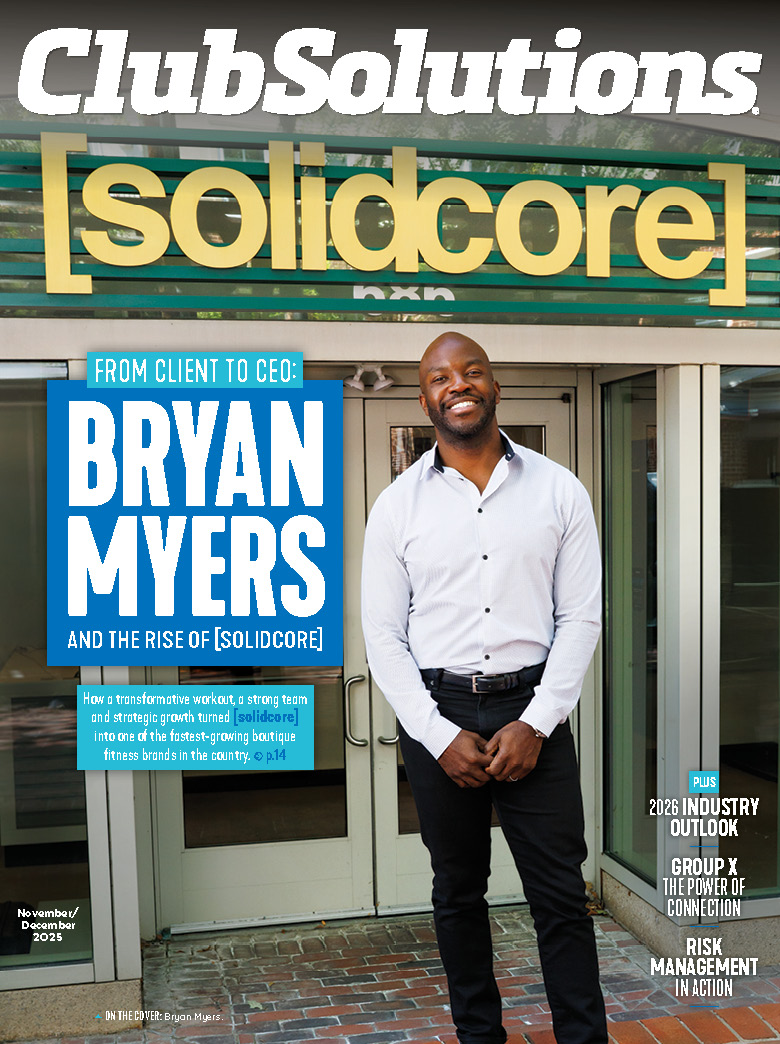According to McKinsey & Company, “Leading companies understand that they are in the customer experience business, and they understand that how an organization delivers for customers is beginning to be as important as what it delivers.” Or in other words, your customer experience is ultimately your product.
Blair McHaney, the CEO of MXM, echoed this sentiment, explaining fitness brands that do it right are those that embed the customer experience into everything they do — including how they write position descriptions, their cleaning processes, and even how they say “hello” and “goodbye” to customers.
“I think a lot of clubs confuse customer service and customer experience,” said McHaney. “Some see it as something separate that stands away from operations and is a function of how people deal with issues. But in order to get customer experience right, you have to recognize that your customer experience is your product.”
Getting Started
In order to ensure your customer experience product is top-notch, it’s important to ensure it’s supported by your company’s operations, systems and processes.
According to McHaney, there are two starting points clubs should consider — the first of which involves articulating a customer experience vision. “The vision has to be set at the highest level of the company in order to be successful,” he said. “Then decide the KPIs you’re going to capture to say if you’re there or not. KPIs could be your net promoter score, your retention, or a combination of social media scores.”
The second starting point involves collecting customer feedback. “You have to collect the voice of customer at volume, not in little pieces here and there,” added McHaney. “And ‘at volume’ has to have a set of metrics across it that align with the behaviors you want your teams to perform.”
Once these two starting points have been put into action, you can begin to operationalize your customer experience.
“If you start with those two things — set a customer experience vision and collect the voice of customer continuously at volume in a way that aligns with the behaviors you need — you’ve got your starting point,” said McHaney. “Now you can build out anything to operationalize.”
Setting the Example
According to McHaney, there are a variety of unique ways clubs can go about operationalizing the customer experience.
For example, he shared that one fitness brand, which has more than 40 locations and is quickly scaling, requires every position to go through customer experience training.
“It doesn’t matter what position you’re in, whether it’s management, housekeeping, sales or personal training — everybody is getting pulled through the exact same customer experience training and setting the expectations,” said McHaney. “That has made a huge impact on their net promoter scores, and has resulted in a major reduction in attrition.”
Another fitness brand has even adjusted the percentage of base pay it provides its sales team from 50% base, 50% commision to 75% base, 25% commission.
“The belief was we could reduce the frequency of ‘bad behaviors,’ and our hypothesis was correct — people did perform better,” explained McHaney. “As a result, their customer experience scores relevant to their sales teams were higher. People think, ‘Place a bigger bet on it and people will do a better job,’ and that’s not true. The science does not back that up.”
In summary, McHaney added that clubs that wish to excel when it comes to customer experience need to make it a daily priority — versus something that’s only met on quarterly or annually.
“The one thing I want people to understand about their customer experience is that member expectations are in constant motion,” said McHaney. “What was great yesterday, is just expected today.”
Stay ahead in the fitness industry with exclusive updates!
Rachel Zabonick-Chonko is the editor-in-chief of Club Solutions Magazine. She can be reached at rachel@peakemedia.com.




![From Client to CEO: Bryan Myers and the Rise of [solidcore]](https://d296qbqev3kq48.cloudfront.net/wp-content/uploads/2025/11/06151333/CS-NovDec25-CoverStory-3-350x250.jpg)







Great article and as an operator very thought provoking.